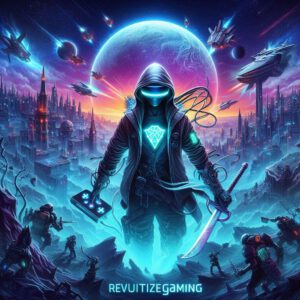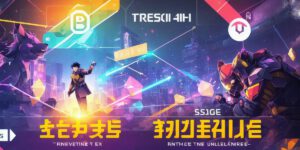NFTs have become increasingly popular among gamers and collectors. NFT games are one of the most exciting developments in this field, offering players unique and immersive gaming experiences that go beyond traditional video games. This article will explore what an NFT game is and how it works, highlighting the key features and benefits that make them so appealing to gamers.
What are NFTs?
NFTs are digital assets that are unique and cannot be exchanged or duplicated. They are stored on a blockchain, making them secure and tamper-proof. NFTs can represent anything of value, such as art, music, videos, and even in-game items.
What is an NFT game?
An NFT game is a video game that uses NFTs to enhance the gaming experience. These games typically offer players unique in-game assets, such as collectible cards or virtual real estate, that are stored on a blockchain. These assets can be bought, sold, and traded among players, creating a vibrant and dynamic marketplace for in-game items.
How do NFT games work?
NFT games typically use smart contracts to manage the buying, selling, and trading of in-game assets. Smart contracts are self-executing programs that automatically carry out contractual terms when certain conditions are met. In an NFT game, a smart contract might be used to transfer ownership of an in-game asset from one player to another, or to facilitate a trade between two players.
The benefits of NFT games
NFT games offer several benefits to players, including:
- Unique and immersive gaming experiences: With NFTs, each player has access to unique in-game assets that are stored on a blockchain. This creates a sense of ownership and investment in the game, making it more engaging and immersive for players.
- A vibrant and dynamic marketplace: The use of NFTs allows for a dynamic marketplace where players can buy, sell, and trade in-game assets. This creates a sense of scarcity and value, driving demand for certain items and creating a thriving community of players.
- Monetization opportunities: NFT games provide monetization opportunities for both game developers and players. Developers can generate revenue through the sale of in-game assets, while players can earn money by buying, selling, and trading these assets.
- Security and transparency: NFTs are stored on a blockchain, making them secure and transparent. This ensures that all transactions are recorded and auditable, reducing the risk of fraud and creating trust among players.
Real-life examples of NFT games
One of the most well-known NFT games is Cryptokitties, which was launched in 2017. The game allows players to collect and breed unique digital cats that are stored on a blockchain. These cats can be bought, sold, and traded among players, creating a thriving community of cat enthusiasts. Another example is Rare Digital, which offers players the opportunity to collect and trade rare digital assets such as art, music, and videos. The game uses smart contracts to facilitate trades between players, creating a dynamic marketplace for unique digital items.
Conclusion:
NFT games are an exciting development in the world of video gaming, offering players unique and immersive gaming experiences that go beyond traditional games. With the use of NFTs, players can buy, sell, and trade in-game assets, creating a vibrant and dynamic marketplace.
The benefits of NFT games
include security, transparency, monetization opportunities, and a sense of ownership and investment in the game. As the popularity of NFTs continues to grow, we can expect to see more exciting developments in the world of NFT gaming.



